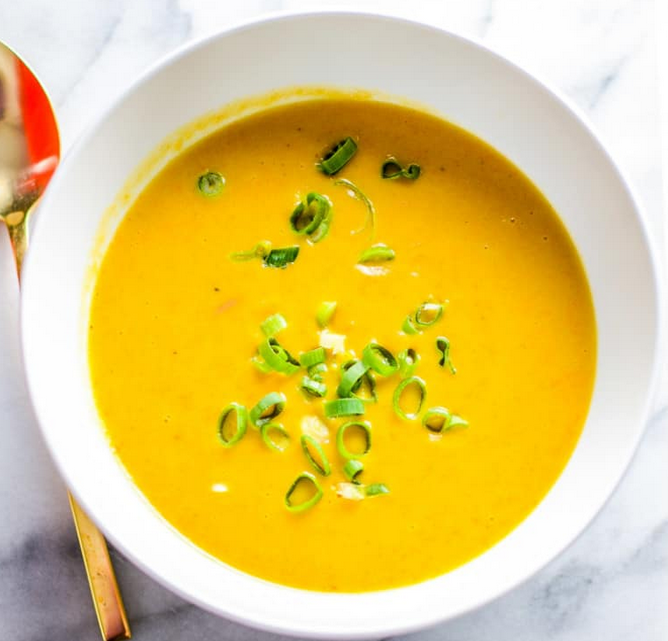
by Jen Briar-Bonpane | Jan 23, 2018 | Digestion, Inflammation, Recipes, Uncategorized
A winter cold swept through my family over the weekend. The old me would have pushed through it, ignoring my body’s call for rest and restoration… and the old me would have ended up much sicker for much longer. It pains me to cancel things that are important like social events, client sessions, and meetings. But I have learned to do it. Some things can’t be cancelled …like parenting or caregiving for elders. Allowing myself to pull back from as much as possible when my body is working through an illness has been life changing. The result is that I get sick less often and I get well faster.
Soup is another go-to when someone in my family is sick. During these cold winter months, a hearty homemade soup is a great way to nourish, warm, and feed your body. By starting with whole foods like organic veggies and clean protein, adding in some healing herbs, and healthy fats you are flooding your system with nutrient rich goodness that is easy to digest and soothing to sore throats.
Soup certainly doesn’t sound like any special life changing superfood. Yet soup has massive potential that often gets hidden behind the preservatives and artificial flavoring agents that are added to many store-bought varieties.
Making weekly (or even daily) soup with local, seasonal ingredients and high-quality broth is as potent as any superfood or supplement out there. It’s a wholesome way to nourish your skin, immune system, joints, digestion, mental health, and gut.
Starting with a base of chopped onion and garlic sautéed in coconut oil is a healthy foundation. Onions have antimicrobial properties and are a great support for a burdened immune system. In the Fall and Winter, soups made with root vegetables and hearty, healing herbs like sage, oregano, and rosemary are ideal.
Bone broth is another key ingredient in any soup. Homemade bone broth is rich in natural gelatin which is anti-aging and great for rebuilding damaged intestinal lining. Making a weekly bone broth at home to have on hand for soup bases, sauces, and cooking liquid (use with water to cook whole grains or add to your crock pot when cooking a batch of beans). Bone broth from scratch is as easy as throwing your leftover chicken carcass in a large pot of water and letting it simmer for 24 hours.
If you’re interested in getting healthy, restoring your digestion and boosting your energy, check out my comprehensive program, Gut Restore. The program is full of tips, strategies, tools, and recipes to help rebuild your digestive health and intestinal flora.
Enjoy this soup recipe in good health!
Curried Butternut Squash and Apple Soup
This is one of my favorite soups. I could eat it every day, it’s so tasty and nutritious. A good soup does wonders for the body and soul. Soups offer a certain comfort that other foods lack. They’re also a vehicle for nutrient dense ingredients.
Butternut squash is an excellent source of vitamin A and one of the healthiest starches you can get. It’s got a gentle sweetness to it which pairs well with a bold curry flavors and embraces the sweetness of apple. Apple and butternut squash naturally compliment each other. They’re harvested at the same time of year, they’re both high in fiber. When Fall comes around this is one of the first soups I whip up. It’s become a staple in my house and I hope you’ll enjoy it just as much.
Ingredients
1 Tablespoon coconut oil
1 onion, finely chopped
1 garlic clove, minced
1 Tablespoon curry powder
1 lb butternut squash, cut into cubes
3 granny smith apples, cut into cubes
4 cups homemade chicken stock or bone broth
1 tsp sea salt
1 tsp thyme
Directions
Heat oil in a large pot, add onions and garlic and simmer until golden. Add curry powder, salt, butternut squash and apple chunks and cover with chicken stock. Allow to simmer for about 30 minutes until butternut squash is soft. Use an immersion blender or add to your blender in batches to create a smooth creamy consistency, enjoy!
- Another alternative to cutting the squash is to split it in half, remove the seeds and roast in the oven with skin on oiled baking sheet at 400 degrees for one hour (or until fork can easily pass thru). You can then cool it a bit and scoop the flesh directly into the blender with the broth and other ingredients.
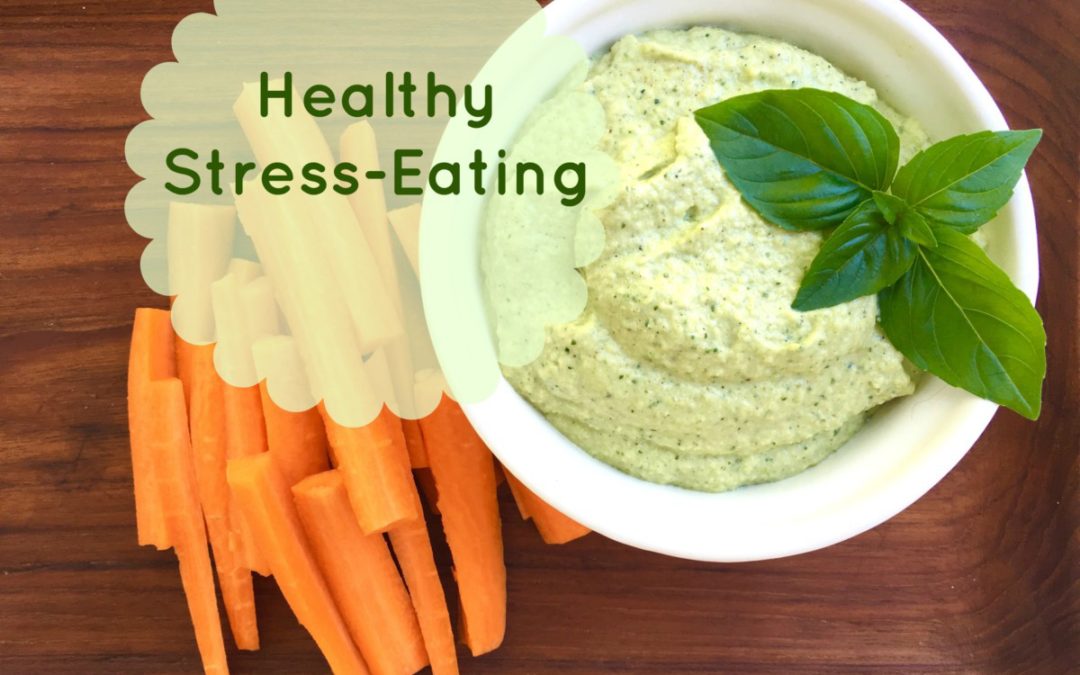
by Jen Briar-Bonpane | Jan 18, 2018 | Brain Health, Digestion, Inflammation, Stress, Symptoms
Are you stressed? Chances are, your stress is affecting your digestion. When we are in very stressful or chronically stressful situations, our fight-or-flight response gets activated. In order to preserve needed energy to deal with what the body perceives as a threat (this could be a toxic boss, experiencing racism, marital conflict, financial stressors, internal stressors like infections or inflammation, etc), our wise bodies slow digestion down and sometimes even bring digestion to a complete stop. This contributes to all kinds of symptoms. Stress and anxiety also make pre-existing gastrointestinal conditions worse.
Since most of our serotonin is made in the gut, digestion that is disrupted by stress will interfere with our supply of this feel-good neurotransmitter. Bring on the depression and anxiety.
What aspects of your life create stress? Not all stress is bad, of course. The stress we feel when working hard to complete a meaningful project on time or the stress we feel when preparing for long-awaited vacation are part of the landscape of life. Stress that goes on for long periods of time or stress resulting from major dysfunction or threats to our well-being is the kind that harms our digestion (and therefore our overall physical and mental health). Usually, we can’t eliminate or decrease these major stressors over night. In the meantime, here a 5 things you bring into your diet to buffer the damage while you make your plan to downsize your stress load.
5 Tips for Healthy Stress Eating
- Eat dark, leafy green veggies. Spinach, for example, is packed with folate which promotes the production of serotonin and dopamine … neurotransmitters that support calm and positive moods. Raw greens can be hard to digest if your gut is struggling so cooking your greens first is helpful. Massaging also works.. try this Kale Salad recipe for an easy dose of mood boosting goodness.
- Tryptophan-rich foods supply the amino acid needed to make serotonin and boost your mood. Turkey, pumpkin seeds, and organic pasture raised eggs are great sources of tryptophan
- Fermented foods boost the beneficial bacteria in your gut which can improve digestion, nutrient absorption, and decrease depression and anxiety. Try fermented vegetables (unpasteurized kim chee or sauerkraut are great), kefir or yogurt that are low in sugar(non-dairy forms like almond or coconut based varieties will be less inflammatory than those made from cow’s milk), and fermented drinks like kombucha or water kefir.
- Skip the sugar! Stress often triggers sugar cravings. Then we eat that sugar and begin the chemical process that leaves us craving more and more sugar. Stress and poor digestion can create fatigue and leave us grasping for the quick energy and temporary mood boost (a brief high that puts us into an addictive cycle) that sugar can produce. Though this might feel good for a few minutes, it is creating toxicity and gut damage that will make us feel worse in the long run. Consuming refined sugar also sets us up for a blood sugar roller coaster that directly results in irritability, depression, anxiety, and disrupted sleep.
- Stabilize your blood sugar. Skipping meals is one of the worst things we can do during times of stress. Eating 3 balances meals per day with lots of whole foods is crucial to keeping our blood sugar stable. Aim for some fiber, health fats, and protein in each meal and avoid processed food to support your gut, brain, and overall well-being. Keep healthy snacks like kale chips, pumpkin seeds, pistachios, avocado slices, flax-seed crackers, hummus, or coconut chips on hand in the event you get hungry between meals or have to work through lunch.
Lots more idea, recipes, and guidance for healing your digestion are available in our upcoming Gut Restore program.
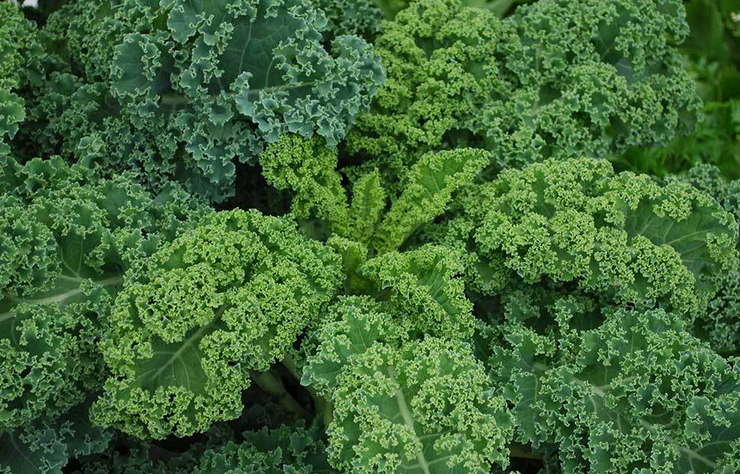
by Jen Briar-Bonpane | Jan 17, 2018 | Digestion, Inflammation, Recipes, Stress
When you are under stress, healthy eating becomes more important than ever. Eating well when times are tough can help boost your mood, decrease anxiety, improve sleep, promote digestion, and minimize the damage stress does to your gut (and your brain, hormones, immune system).
Whole foods, especially dark leafy greens are superheroes when it comes to mood and digestion.
Give this easy massaged kale and apple dish a try.
MASSAGED KALE WITH APPLE
- 4 cups kale, thinly sliced
- 1 cup parsley, chopped
- 1 large lemon, juiced
- 1 avocado, chopped
- 4 tablespoons extra virgin olive oil
- 1/4 teaspoon sea salt
- 1/4 teaspoon black pepper
- 1 large apple, chopped
- 1/4 cup carrots, shredded
Suggested toppings: pumpkin seeds, sunflower seeds, dried cranberries
Add kale, lemon juice, and sea salt to a bowl and massage well with clean hands. The kale should turn bright green and become softer (1-2 minutes). Add all other ingredients and toss.
Top with pumpkin seeds for that extra protein and tryptophan (for blood sugar stability and serotonin production) and dried cranberries if desired.
What healthy foods do you eat when you’re stressed?
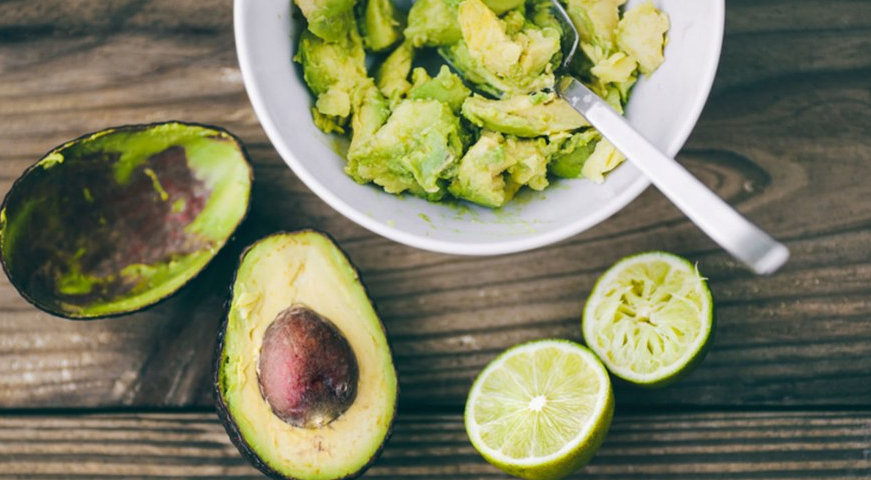
by Jen Briar-Bonpane | Jan 16, 2018 | Brain Health, Digestion, Inflammation, Recipes
Guacamole gets my vote as a superhero among condiments. It’s easy to make, so yummy and filled with healthy fats, vitamins, enzymes and fiber. At the store you can find so many pre-made versions of guacamole that are loaded with artificial preservatives and MSG. Or, even worse, those flavor packets with bad iodized salt, MSG and dehydrated vegetables that you’re supposed to mix in with wholesome precious avocados.
Fresh, homemade guacamole from scratch takes less than 10 minutes and is infinitely better than anything you can get from the store.
You can do the basic recipe or get creative with flavorful variations. I love adding a fresh chopped tomato or red onion or even cinnamon to my guacamole for an extra burst of flavor and color. If you like it spicy you can experiment with adding any of the rainbow of hot pepper varieties. The options are deliciously endless. But for now, here is the basic version..
The Basics of a Beautiful Guacamole
The most basic version of guacamole that you can mash together in under 5 minutes.
2 ripe avocados
1 clove fresh minced garlic
1 tablespoon lime juice
Handful chopped cilantro
1 teaspoon sea salt
Drizzle of olive oil
Mash the avocado and mix in the rest of the ingredients.
Some days there is nothing better than sticking to the basic and keeping it simple. On on other days you might want to jazz it up…
Guacamole Supreme
2 ripe avocados
1 clove fresh garlic, minced
1 tablespoon lime juice
¼ cup red onion, very finely chopped
1 jalapeno pepper, seeds removed, very finely chopped
1 ripe roma tomatoes, finely chopped
1 tablespoon olive oil
1 teaspoon sea salt
Handful of both cilantro and parsley, finely chopped
Mash the avocado and mix all ingredients together.
If you like it ultra smooth and fluffy, add all ingredients to your blender and process until velvety.
How do you guac? Comment below!
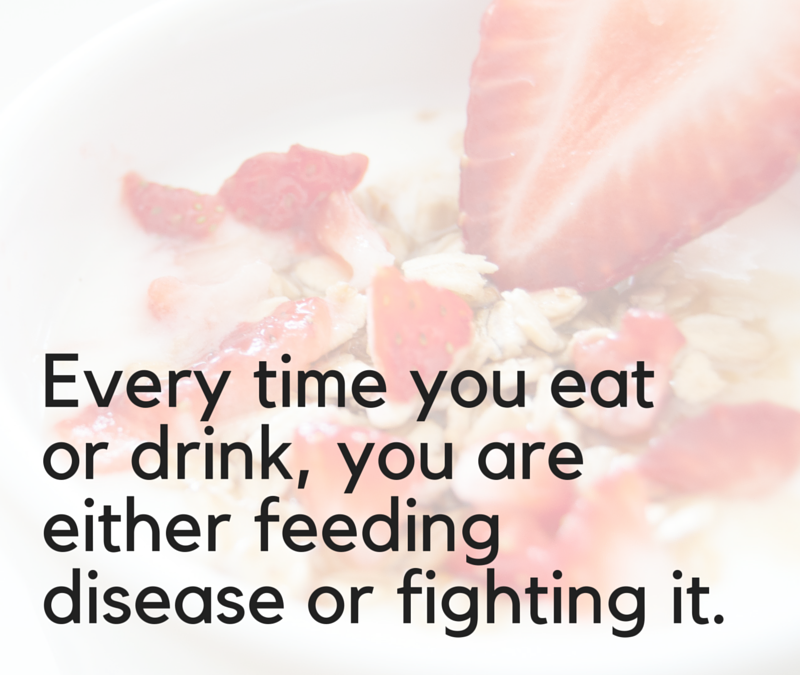
by Jen Briar-Bonpane | Jan 12, 2018 | Brain Health, Digestion, Recipes
I hope 2018 is off to a healthy start for you.
Did you know cultured foods are all the rage? And rightly so.
They whip your digestive system into shape by packing it full of the good bacteria your gut is probably starving for.
That’s why I had to share this phenomenal cultured recipe from my upcoming 8-week Gut Restore program. Give it a try and see what you think. Your gut, and the rest of your body, will thank you.
This recipe is one of over 59 recipes in my Gut Restore program that could be a game changer for your health. It starts February 1st with early bird discounted pricing through January 22nd. Join us and make 2018 your year to thrive.

Coconut Yogurt
(ADAPTED FROM NOMNOMPALEO.COM)
Serves 2
1 15-ounce can full-fat coconut milk (BPA-free can)
1 probiotic capsule (at least 50 billion)
Refrigerate the coconut milk for about an hour while it is still in the can to create a thicker yogurt.
Next, remove the coconut milk from the can, and place it in a sterilized jar. Add the contents of the probiotic capsule. Mix the contents well, and tightly close the jar.
To incubate the yogurt, place your jar of coconut milk in the oven with the light on and tightly close the door. Do not turn the oven on. A closed oven with the light on generates heat of about 105 to 110° Fahrenheit. Incubate your yogurt for up to 24 hours.
In Health,
Jen Briar-Bonpane, LCSW, CIHNC





